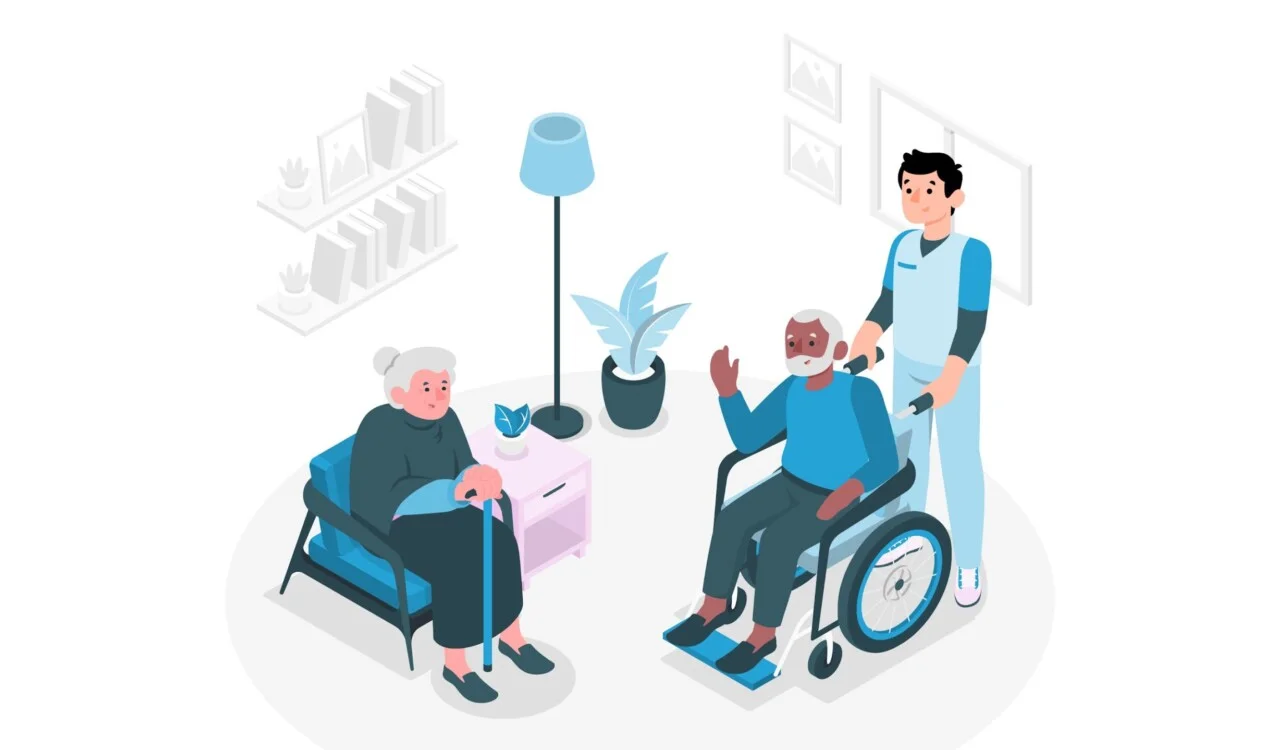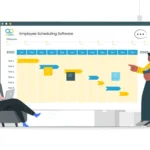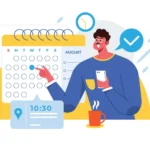In the homecare system, caregivers provide essential compassionate support. Their tireless dedication empowers individuals in need, but their well-being is equally paramount. By prioritizing their needs and satisfaction, we not only elevate caregivers’ lives but also fortify the very foundation of the homecare services industry. Adopting a caregiver app can help you achieve this.
Along with excellent caregiving services, an optimal caregiver experience is non-negotiable for a healthcare agency. Caregivers are the backbone of the healthcare industry, providing essential care to those who need it most.
The working conditions of caregivers have a direct impact on their caregiving and retention. When caregivers are happy and well-supported, they are more likely to provide high-quality care and stay on the job longer. This is good for both the caregivers and the healthcare agency.
Their work mainly involves traveling long distances and visiting multiple patients in a single day. This can be a very demanding and time-consuming task, so it is important to optimize these two areas of their operations.
In a recent survey, more than 60% of participants acknowledged their workforce experiencing excessive workloads and burnout. The absence of streamlined scheduling and optimized travel routes for home care appointments has led to a rise in caregiver exhaustion. This situation has also resulted in additional difficulties like increased travel expenses, delayed or overlooked visits, and other similar issues.
Furthermore, inflated gas prices have increased the challenges posed by ineffective schedules for home care personnel. These workers may encounter difficulties in receiving adequate compensation for their travel time, especially when subjected to a fixed mileage reimbursement rate.
As per the above surveys, issues such as missed or delayed visits, scheduling challenges, and inefficient routing rank among the top ten pain points of caregivers. Addressing these challenges becomes crucial as they contribute to heightened stress and burnout among caregivers.
Electronic visit verification mandates brought much-needed changes in the operations. However, it may not be enough and the next step is to adopt software for reducing the caregiver pain points– scheduling and route optimization.
Scheduling using Caregiver App
Using manual methods to manage schedules and operations in healthcare agencies leads to many issues and fails to provide important business insights. Even though medical technology is getting better, the administrative part of healthcare is still slow to change. Current scheduling processes look like this for most healthcare agencies-
- Scheduling is often done by hand using Excel or makeshift systems made from different programs. Some places still use paper or whiteboards for scheduling.
- Temporary methods aren’t good enough for a workforce that needs to be flexible and work on demand. It’s hard to quickly share important information with the right person.
- Data is spread out in different places, making it tough to analyze and gain insights.
- Keeping track of the latest information is difficult, and sometimes important pointers get forgotten. Without detailed profiles, it’s also difficult to match patients with the right caregivers.
A software scheduling app is the one-stop solution for improving administrative and caregiver experiences.
- Balance your caregivers’ schedules
Having your caregivers work too much or too little will make them less satisfied and more stressed, which can hurt their work quality. If your employees aren’t happy, it can lead to lower productivity, more people leaving, and your business not running as smoothly. This can all affect the patients too.Technology can make sure caregivers have balanced schedules, so they’re not too burdened or underwhelmed with their work. - Increase adaptability to schedule changes
Flexibility is crucial in managing caregiver schedules because routines can unexpectedly change. As per the National Alliance for Caregiving, about 70% of caregivers have had to adjust their work schedules to take care of their responsibilities. Being able to adapt to these changes helps keep things running smoothly.For instance, if the client has a sudden doctor’s appointment coming up, you’ll need to modify the schedule to make sure there’s a caregiver available to go with them.With manual methods, there is little or no room to adjust and communicate these changes. But with an employee scheduling app, you can instantly make changes via a dashboard and employees will receive a notification. - Effective communication
If you communicate with your caregivers at work via calls, text messages, and various messaging platforms, it is time to rethink your strategy. With a centralized caregiver app adopted by your agency, you are in constant touch with your employees via one single platform.Within the app, you can use intelligent reminders and notifications to address potential oversights by caregivers, such as forgetting to clock in/out or log tasks. These automated reminders can be tailored to their schedules or specific situations, like when a task hasn’t been recorded or if GPS is deactivated.In case of an emergency, an employee can activate the SOS alarm by either pressing a button on the app or rapidly pressing the phone’s ‘power’ button four times. The same app can also enable team members to see and exchange their locations.
Route Optimization Using Caregiver App
Timely delivery of services set apart average homecare services from the ones ahead of the curve. Today, clients expect swift and punctual deliveries. For the caregiver, too, minimal travel time will prevent burnout.
- In the case of home visits, schedules are often defined only once a week or even once a month. Coordinators have to manage a large number of constraints such as preferentially assigning the same professional to a client or multiple clients. In such a schedule, there may be little or no consideration of proximity between two homes.
- Many agencies continue to use old tools like route planners or manually input stops on Google Maps.
- In some agencies, caregivers have a manual list of homes to visit. And they need to figure out the best route themselves while on the job.
All cases point towards the need for a single consolidated system for route optimization. Coupled with scheduling benefits, software for route optimization can improve your caregiver experience significantly.
- Less travel time
By minimizing travel time, caregivers can dedicate more of their time to serving customers and enhancing the quality of client interactions.Effective tools empower teams to easily arrange jobs that are conveniently located close to each other, preventing field workers from having to traverse across town to complete tasks. These well-structured routes contribute to creating more consistent work hours and diminishing the need for overtime, ultimately resulting in content and more effective staff members. - Boosted productivity
Desk-less workers gain significant advantages from robust scheduling and routing tools, as they can access updated information while out in the field. This enables them to seamlessly move from one appointment to the next without the need to switch between multiple apps for updates, access optimized routes, or perform their daily tasks.When caregivers aren’t constrained by manual scheduling procedures and tools, they can focus on their tasks and maintain optimal productivity. Rather than being consumed by concerns about frequent schedule changes, accommodating customer preferences, and managing job locations, workers equipped with a caregiver app can ensure precision. - Cost optimization
The caregiver app not only optimizes routes but also maintains a dashboard with data about the route traveled. Comprehensive reports can also be generated using the same. Therefore, discrepancies related to reimbursements are reduced and caregivers are fairly compensated.Route optimization directly influences operational expenditures. You can minimize mileage traveled, expenses tied to fuel, maintenance, and vehicle wear and tear can be reduced. By avoiding unnecessary detours and optimizing routes, you can increase profits.
Conclusion
The scheduling and routing methods of a field service organization can either hinder productivity, pose a threat to its success, or become a source of competitive advantage. A well-established process supported by powerful software can enhance worker efficiency, lower operational expenses, and enhance customer satisfaction, offering them a significant edge over their rivals.
Numerous agencies are adopting technology to update their operations and improve the caregiver experience. This smart choice is expected to not just give them a competitive edge, but also create lasting benefits for the future.
If you are managing a home care agency, now is the right time to redo your scheduling and routing strategy to provide an optimal experience for your clients and caregivers.



